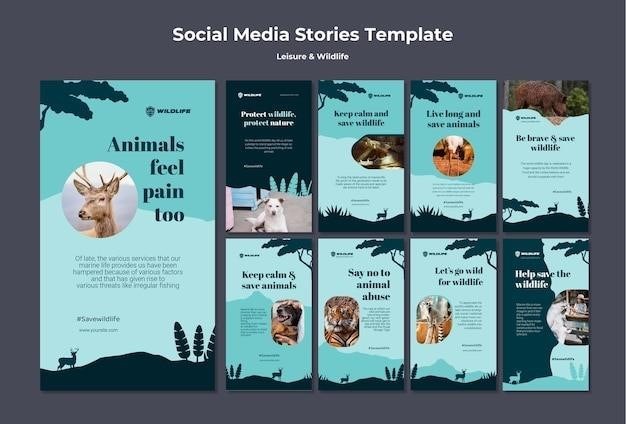Welcome to the WWE 2K24 MyRise Unlockables Guide! This comprehensive guide explores the vast array of unlockables in MyRise mode, including arenas, characters, championships, and MyFACTION cards. Whether you’re navigating the Undisputed or Unleashed storylines, we’ll help you discover how to unlock exclusive rewards and enhance your gaming experience.

Overview of WWE 2K24 MyRise Mode
MyRise mode in WWE 2K24 offers an immersive, story-driven experience, featuring two unique campaigns: Undisputed (male division) and Unleashed (female division). Each storyline provides distinct rewards and choices, shaping your wrestler’s journey and unlocks. This mode is a must-play for WWE fans seeking depth and customization.
What is MyRise Mode?
MyRise mode in WWE 2K24 is a single-player, story-driven campaign that allows players to create and customize their own WWE Superstar. This mode offers a dynamic narrative experience, letting players guide their character through various storylines, matches, and decisions that impact their journey. MyRise mode is divided into two distinct campaigns: Undisputed for male Superstars and Unleashed for female Superstars. Each campaign features unique storylines, cutscenes, and objectives, providing players with a personalized WWE experience. By progressing through the mode, players can unlock exclusive content, including arenas, championships, and MyFACTION cards, enhancing their overall gameplay experience. MyRise mode is a cornerstone of WWE 2K24, offering endless hours of engaging and immersive gameplay.
Key Features of MyRise Mode in WWE 2K24
MyRise mode in WWE 2K24 offers a rich and immersive experience with several standout features. Players can create and customize their own WWE Superstar, choosing from a variety of appearance options, move sets, and personality types. The mode is divided into two distinct storylines: Undisputed for male Superstars and Unleashed for female Superstars, each with unique narratives and objectives. Key features include dynamic decision-making that impacts story outcomes, branching storylines, and the ability to unlock exclusive content such as arenas, championships, and MyFACTION cards. Additionally, the mode requires multiple playthroughs to unlock all content, adding replay value. With its engaging storyline and customization options, MyRise mode provides a personalized WWE journey for every player.

Types of Unlockables in WWE 2K24 MyRise
In WWE 2K24 MyRise, unlockables include arenas, characters, championships, and MyFACTION cards. These rewards enhance gameplay and customization, offering unique content for both storylines and modes.
Arenas
In WWE 2K24 MyRise, arenas are a key part of the unlockable content, offering players the chance to compete in various iconic and exclusive venues. These arenas are unlocked through progression in the game’s storylines, with each arena tied to specific achievements or storyline choices. For example, completing certain chapters in the Undisputed or Unleashed storylines can unlock legendary arenas like WrestleMania stages or NXT-specific venues. Each arena provides a unique atmosphere, enhancing the overall gaming experience. To collect all arenas, players may need to explore different playthroughs, as some are exclusive to particular story paths. Unlocking these arenas adds depth and variety to matches, for a more immersive and dynamic gameplay experience.
Characters
Unlocking characters in WWE 2K24 MyRise is a rewarding experience, as players can access a variety of WWE Superstars, including legends and up-and-coming talent. These characters are tied to specific storyline progression and choices within the Undisputed and Unleashed campaigns. For instance, completing key chapters or achieving certain objectives can unlock fan-favorite wrestlers like Asuka or other exclusive Superstars. These unlockable characters can be used in multiple game modes, enhancing your roster and gameplay options. Some characters are exclusive to specific playthroughs, requiring strategic decisions to unlock them. Additionally, certain MyFACTION cards are tied to character unlocks, further expanding your customization and team-building possibilities. With multiple playthroughs, you can collect a diverse range of Superstars, each bringing unique abilities and styles to your WWE 2K24 experience.
Championships
WWE 2K24 MyRise mode offers three exclusive championship belts that players can unlock by progressing through the Undisputed and Unleashed storylines. These belts are tied to key storyline milestones and decisions, rewarding players for their journey through the campaigns. Unlocking these championships not only enhances your MyRise experience but also allows you to use them in other game modes, adding a personal touch to your matches. Each championship belt is uniquely designed, reflecting the legacy and prestige of WWE’s storied history. To collect all three, players must complete multiple playthroughs and make strategic choices that align with their storyline paths. These unlockable championships are a great way to showcase your achievements and customize your WWE 2K24 experience.
MyFACTION Cards
WWE 2K24 MyRise mode features 18 unlockable MyFACTION cards, offering players the chance to bolster their MyFACTION roster with unique and exclusive wrestlers. These cards are tied to specific achievements and storyline progressions within both the Undisputed and Unleashed campaigns. By completing key chapters and making strategic decisions, players can unlock these valuable additions to their MyFACTION team. Some cards are exclusive to one storyline, while others require multiple playthroughs to obtain. Unlocking MyFACTION cards not only enhances your MyFACTION experience but also provides access to rare wrestlers and attires. This feature adds depth to MyRise mode, rewarding players with new content that can be used across other game modes. With 18 cards to collect, there’s plenty to strive for in building your ultimate MyFACTION lineup.

MyRise Unlockables by Storyline

WWE 2K24 MyRise mode offers unique unlockables tied to its two distinct storylines: Undisputed and Unleashed. Each storyline provides exclusive rewards, including arenas, championships, and MyFACTION cards, encouraging players to explore both narratives for a complete experience.
Undisputed Storyline Rewards
The Undisputed storyline in WWE 2K24 MyRise mode is tailored to the male division, offering a unique set of rewards for players. By progressing through this narrative, you can unlock exclusive arenas, championship belts, and MyFACTION cards. Completing specific chapters and making strategic decisions in key moments will grant access to these rewards. Some unlockables are exclusive to the Undisputed storyline, making it a must-play for those seeking rare content. The storyline also features special character interactions and story branches that enhance the overall experience. Players are incentivized to explore different playthroughs to maximize their rewards, as certain items can only be unlocked by adhering to specific choices or outcomes within the Undisputed path.
Unleashed Storyline Rewards

The Unleashed storyline in WWE 2K24 MyRise mode is specifically designed for the women’s division, offering a unique array of rewards tailored to this narrative. Players can unlock exclusive arenas, MyFACTION cards, and championship belts by progressing through this storyline. The Unleashed path provides opportunities to interact with iconic female Superstars and earn rewards that are distinct from the Undisputed storyline. Completing chapters and making key decisions will grant access to these exclusive items, enhancing your MyRise experience. The storyline also features unique story branches and character moments that set it apart from its male counterpart.

How to Unlock MyRise Content
Unlocking MyRise content in WWE 2K24 requires completing chapters, achieving objectives, and making strategic decisions. Multiple playthroughs are necessary to access all rewards, ensuring a rich, varied experience.
Completing Chapters and Objectives
Completing chapters and objectives is crucial for unlocking content in WWE 2K24’s MyRise mode. Each chapter presents unique challenges and story-driven tasks that must be fulfilled to progress. By achieving these objectives, players earn rewards such as new arenas, characters, and MyFACTION cards. The game’s narrative branches based on your decisions, influencing which unlockables become available. Additionally, some rewards are tied to specific choices, making each playthrough feel distinct. Regularly progressing through chapters ensures a steady flow of unlockables, keeping the experience engaging and rewarding. Consistent completion of objectives is essential for accessing the full range of content MyRise has to offer.
Strategic Decision-Making

Strategic decision-making plays a pivotal role in unlocking content in WWE 2K24’s MyRise mode. Players must carefully choose their responses and actions during key story moments, as these decisions significantly impact the rewards they receive. Aligning with specific factions, forming alliances, or adopting certain personas can unlock exclusive items and story paths. For instance, selecting a face or heel persona may grant access to unique championships or MyFACTION cards. Additionally, some decisions influence future chapters, offering opportunities to unlock rare arenas or legendary wrestlers. To maximize rewards, players should plan their choices thoughtfully, considering both short-term benefits and long-term unlocks. This strategic approach ensures a more personalized and rewarding experience tailored to their playstyle and goals.
Multiple Playthroughs Required
In WWE 2K24’s MyRise mode, unlocking all content requires multiple playthroughs due to the depth and variety of rewards tied to different storylines and choices. Completing the game once won’t unlock everything, as certain rewards are exclusive to specific paths, such as the Undisputed or Unleashed storylines. Additionally, the personality type chosen at the beginning influences the unlockables, meaning players must experiment with different personas to access all content. Some arenas, characters, and MyFACTION cards are only available through repeated playthroughs, making it essential to explore various decisions and story branches. This design encourages replayability and ensures that each playthrough feels unique, offering players a fresh experience and new rewards to discover.

Exclusive MyRise Rewards
WWE 2K24’s MyRise mode offers exclusive rewards, including unique championship belts, legendary arenas, and special MyFACTION cards that enhance gameplay and provide a personalized experience for players.
Championship Belts
In WWE 2K24’s MyRise mode, championship belts are among the most coveted unlockables. There are three unique championship belts available, each tied to specific storylines and achievements. Players can earn these belts by progressing through the Undisputed and Unleashed storylines, completing key chapters, and making strategic decisions that align with their character’s journey. These belts not only add prestige to your custom superstar but also serve as symbols of their in-game accomplishments; Unlocking all championship belts requires multiple playthroughs and careful decision-making to ensure you meet the criteria for each reward. These exclusive belts are a testament to your character’s growth and dominance in the WWE universe, making them a must-have for any dedicated player aiming to maximize their MyRise experience.
Legendary Arenas
WWE 2K24’s MyRise mode offers 10 unlockable arenas, each with its own unique history and atmosphere. These legendary arenas are tied to specific storylines and can be unlocked by progressing through the Undisputed and Unleashed campaigns. Players can earn these iconic venues by completing key chapters, achieving objectives, and making strategic decisions that align with their character’s journey. Legendary arenas include classic WWE venues and exclusive locations, adding depth and variety to your MyRise experience. Unlocking these arenas not only enhances your gameplay but also immerses you in WWE’s rich history. With multiple playthroughs required to access all arenas, the journey to unlock them becomes a rewarding adventure for dedicated players seeking to explore every corner of the WWE universe.
Unique MyFACTION Cards
WWE 2K24’s MyRise mode offers 18 exclusive MyFACTION cards, providing unique advantages for your MyFACTION team. These cards are split between the Undisputed and Unleashed storylines, rewarding players with rare Superstars, legendary attires, and special items. By completing specific chapters and making strategic choices, you can unlock these cards to enhance your MyFACTION roster. Each card adds a distinct edge, allowing you to customize your team with iconic wrestlers and gear. Earning these cards requires multiple playthroughs and careful decision-making, making them highly sought after by players. Unlocking all 18 MyFACTION cards is a testament to dedication and mastery of MyRise mode, ensuring a standout MyFACTION experience. These unique rewards are a key highlight of the WWE 2K24 MyRise unlockables, offering endless possibilities for your MyFACTION lineup.

Maximizing Your Unlockables
To maximize WWE 2K24 MyRise unlockables, focus on strategic gameplay, completing chapters, and making calculated decisions. Multiple playthroughs and careful planning ensure you unlock all exclusive content.
Tips for Completing Challenges
Completing challenges in WWE 2K24 MyRise mode is essential for unlocking exclusive content. Start by understanding each chapter’s objectives and focus on achieving them efficiently. Save your progress frequently to avoid losing momentum. Learning from failures is crucial, as some challenges require specific strategies or movesets. Experiment with different skill tree upgrades to strengthen your character. Pay attention to storyline choices, as they can unlock hidden rewards. For tougher challenges, consider replaying matches with adjusted tactics. Utilize your character’s strengths to overcome opponents. Remember, both Undisputed and Unleashed storylines offer unique challenges, so adapt your approach accordingly. By staying persistent and methodical, you’ll unlock all MyRise rewards and enhance your gaming experience.
Choosing the Right Personality Type
Selecting the appropriate personality type for your character in WWE 2K24 MyRise is crucial for maximizing unlockables and shaping your storyline. Each personality type influences interactions, story branches, and rewards, offering unique experiences. For instance, a Fan Favorite personality may unlock crowd-pleasing moves and positive story outcomes, while a Company Man might gain access to exclusive alliances and storylines. Experimenting with different personalities across multiple playthroughs can reveal hidden rewards and unlockables tied to specific traits. Aligning your personality with your playstyle ensures a more immersive and rewarding journey through MyRise mode. This strategic choice enhances your ability to earn exclusive content and customize your character’s path to stardom.
Earning Rewards Efficiently
To maximize your rewards in WWE 2K24 MyRise, focus on completing chapters and achieving high ratings in matches. Consistently meeting objectives and making strategic decisions aligns with your storyline, unlocking exclusive content. Prioritize key choices that align with your character’s personality and goals, as these often lead to unique rewards. Additionally, completing specific challenges and milestones can grant access to rare arenas, championship belts, and MyFACTION cards. Efficiency also comes from planning multiple playthroughs, as certain unlockables are tied to different story paths. By optimizing your progress and decisions, you can efficiently unlock a wide range of content, enhancing your MyRise experience and building a standout roster for other modes like MyFACTION.
Final Thoughts on MyRise Unlockables
WWE 2K24 MyRise mode offers an extensive array of unlockables, providing players with a rich and rewarding experience. From exclusive arenas to legendary characters and unique MyFACTION cards, the content is both diverse and engaging. The dual storyline approach, featuring Undisputed and Unleashed, ensures that each playthrough feels fresh and offers distinct rewards. To fully unlock all content, multiple playthroughs are essential, adding significant replay value. The satisfaction of earning exclusive items enhances the overall experience, making MyRise a standout feature for both new players and seasoned fans. This mode not only deepens the game’s longevity but also offers a personalized journey that reflects the player’s choices and strategies.
Preparing for Future Playthroughs
Preparing for future playthroughs of WWE 2K24 MyRise is crucial to maximizing your unlockables. By understanding the rewards tied to different storylines and personality types, you can plan your next playthrough strategically. Note the decisions and choices that unlock specific items, allowing you to focus on unobtained content in subsequent runs. Additionally, consider experimenting with alternate paths and personality types to access unique rewards. Saving your progress and tracking unlocked items ensures you don’t miss out on exclusive content. For the most dedicated players, some unlockables may require up to four playthroughs, making preparation key to efficiency. This foresight enhances the overall experience, ensuring you get the most out of MyRise mode.




































